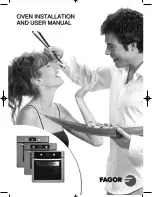
GB-20
ENGLISH
WHAT
ARE
MICROWAVES?
Microwaves are energy waves, similar to those used
for TV and radio signals.
Electrical energy is conver ted into microwave
energy, which is directed into the oven cavity via a
waveguide. To prevent food and grease entering the
wave guide it is protected by the waveguide cover.
Microwaves cannot pass through metal, because of
this the oven cavity is made of metal and there is a
fine metal mesh on the door.
During cooking the microwaves bounce off the sides
of the oven cavity at random.
Microwaves will pass through certain materials, such
as glass and plastic, to heat the food.
(See "Suitable Cookware" on page GB-21).
Water, sugar and fat in food absorb microwaves
which cause them to vibrate. This creates heat by
friction, in the same way your hands get warm when
you rub them together.
The outer areas of the food are heated by the
microwave energy, then the heat moves to the
centre by conduction, as it does in conventional
cooking. It is important to turn, rearrange or stir food
to ensure even heating.
Once cooking is complete, the oven automatically
stops producing microwaves.
Standing time is necessar y after cooking, as it
enables the heat to disperse equally throughout the
food.
R-240_OM_01_EN.indd Sek1:20
R-240_OM_01_EN.indd Sek1:20
2011-03-18 21:04:34
2011-03-18 21:04:34








































